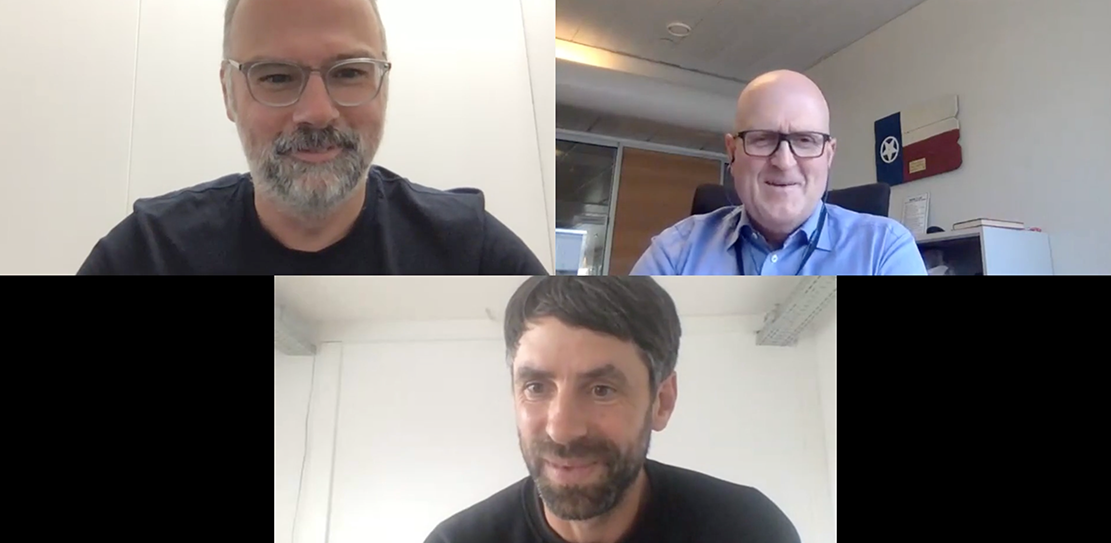Oct 05 | 2020
With Maturing Technologies, Industry Poised for Next Steps

By Gary Burrows
The breakbulk and project cargo industry faces a “perfect storm,” with technologies relatively mature and developing an abundance of data.
“I think the infrastructure is there, it needs to get to a point where technology is going to leverage the efficiency gains,” said Aljosja Beije, director of BlockLab, during a Breakbulk 365 webinar on Oct. 1.
Solutions are not one-size-fits-all, nor found in one miracle innovation, Beije added during the session, which was part of the Breakbulk Europe Digital Special.
“It’s not going to be one single technology that’s going to transform the industry or allow us to get the efficiency gains we’re looking for,” he said. “It’s normally a combination of different technologies to solve a particular issue … the sum of these technologies is bigger than the parts.”
Of course with his company’s focus being blockchain solutions, he acknowledges that focus, but notes, “there has been a lot of talk about using blockchain to solve all of the world’s problems.”
Blockchain allows validated data, with numerous proofs of data integrity. It also can certify the transfer of ownership in a shipping transaction, enabling a negotiable electronic bill of lading, the speakers said.
In response to an audience survey that asked which technologies would impact the breakbulk industry in the next five years, the panelists roughly agreed that internet of things, platforms and big data analytics were at the core, with perhaps artificial intelligence and blockchain shortly behind.
“Especially starting with big data analytics. That’s especially where freight forwarders and freight owners could do a lot more in this kind of field,” said Sven Hermann, managing director ProLog Innovation and professor for logistics and supply chain management, for the Northern Business School.
This cooperation would allow them to better evaluate projects, cooperate among different freight owners, in order to better plan projects. Further it would enable the freight owner to leverage logistics services providers, while helping LSPs to better evaluate and optimize the supply chain, he added.
Which technologies do you think will impact the breakbulk industry most in the next five years?
| Big Data Analytics | 23% |
| Internet of Things | 15% |
| Blockchain | 15% |
| Platforms | 14% |
| Artificial Intelligence | 9% |
| Drones and Aerial Vehicles | 9% |
| Autonomous Equipment and Vehicles | 4% |
| Cloud | 4% |
| Robotics and Automation | 4% |
| 3D Printing | 3% |
‘Close the Gap’
In response to another survey question asking what is the biggest challenge for a company in implementing new technology, webinar viewers ranked “lack of vision/strategy,” “lack of skills within the company,” and “training and development” as chief obstacles.
Hermann agreed that he saw a lack of competence among small and mid-sized LSPs. “In the breakbulk industry, we’re definitely not at the top, so there’s still a long way to go to close the gap,” he said.
“Closing the gap is something where we try to do it hand-in-hand with partners that are open to innovation,” he said. “Then it’s easier to close that gap than going it alone.”
Beije agreed. “Rather than trying to develop every functionality yourself, you’re linked to platforms where services are offered by providers that operate on that platform. Infrastructure is based on what you need and you can plug-and-play. I believe these processes, especially in the order processing, have huge potential to collaborate between different parties – even competitors – without sacrificing your unique selling points for your clients, while creating efficiencies.”
Beije did note that breakbulk requires more careful analysis of the types of cargoes and situations involved. “Compared to other areas of logistics or containerized trade, they have a huge advantage in that the industry is standardized – we’re talking 20-foot or 40-foot .. and between the top 10 ports. The identification is easier.
“When you talk about breakbulk, it gets more complex, but also the infrastructure for projects in some countries is not that far developed. Try to get a 5G connection in some of these areas.”
Leif Arne Strømmen, vice president – Innovation and Project Logistics, G2 Ocean and the webinar’s moderator, noted that, as a carrier, “we have a long way to go to digitize the customer journey.”
He noted there are a number of digital freight forwarders and ecommerce providers up-and-coming that could help pull the breakbulk industry forward. “To some extent, we’ll compete with these players but also work with them; how does the breakbulk industry close the gap?”
Hermann said that, while blockchain participants operate in a trusted environment, he sees the need to “design something for a trustless environment,” in which would operate with an electronic bill of lading.
Technologies can present all sorts of bells and whistles, Beije said, but it all reverts back to managing the data to improve processes.
“I was talking a couple of months ago with somebody from Tesla. They claim they have perfect visibility and they know exactly where the car is when it’s being transported.
“On the other hand, my car was delivered two months late,” he added.
What is your biggest challenge as a company when it comes to implementing new technology?
| Lack of vision/strategy | 26% |
| Lack of skills within company | 23% |
| Training and development | 19% |
| Finance issues | 10% |
| Pushback from employees | 10% |
| Availability of data | 10% |
| Other | 3% |
Covid Acceleration
The worldwide shift to remote officing among businesses has helped to evolve the process of assimilating technologies, the speakers agreed.
“What we’ve seen in general is that people are aware digitalization is the way to go,” Beije said. “Covid has brought remarkable speed in which people want to digitize their activities and processes.”
Certainly the need to remove paper from the process during a pandemic is the most obvious push towards going digital.
“What we’ve seen in the last weeks and months is that all are satisfied to change to remote work,” Hermann said. We’ve given employees sufficient technologies and all companies are happy with it. Now we need to see how to manage going forward. Even when Covid is over and we can see each other again, I still think there will be lasting change on this people business.”
In your view, what is most important reason to become more digital?
| To improve efficiency of processes | 41% |
| To remain competitive | 28% |
| To better meet customer expectations | 22% |
| To create more visibility throughout the supply chain | 9% |
The webinar, "The Breakbulk Technology Landscape: Gaining a Competitive Advantage," is available.
Related stories
Breakbulk New Normal: Wake Up, Wise Up
Carriers Find Themselves in a Spot
Roger Strevens on How to Achieve Real Sustainability
Business Outlook Webinar Follow-up Q&A with Volga-Dnepr
Project Logistics 2030 (Part 1 of a 6-part series)
Subscribe to BreakbulkONE and receive more industry stories and updates around impact of COVID-19.
